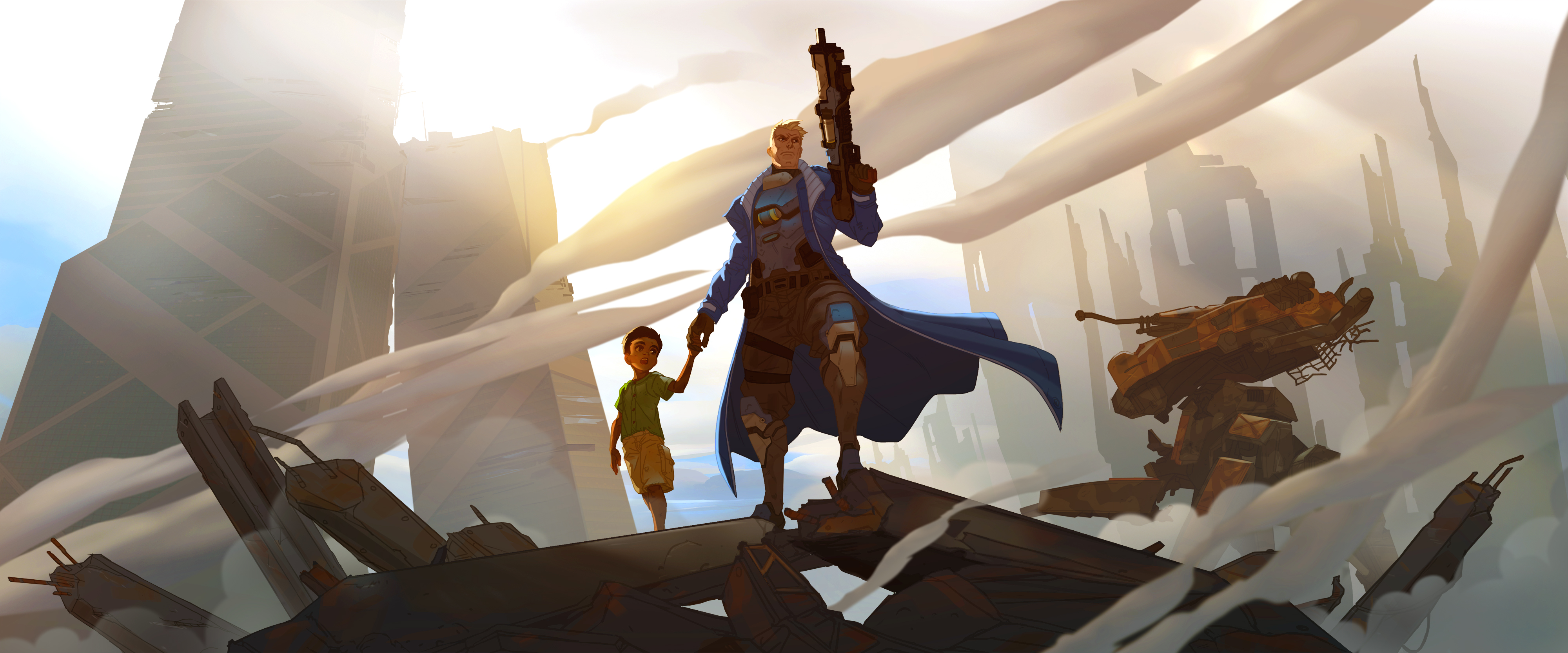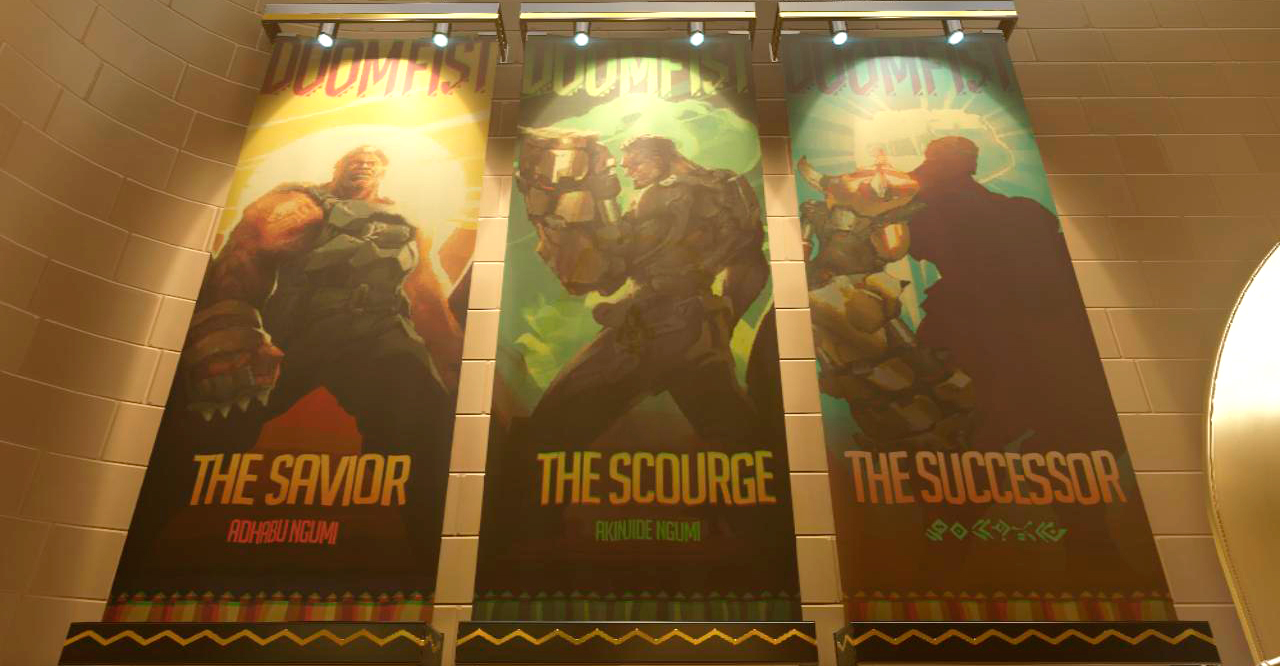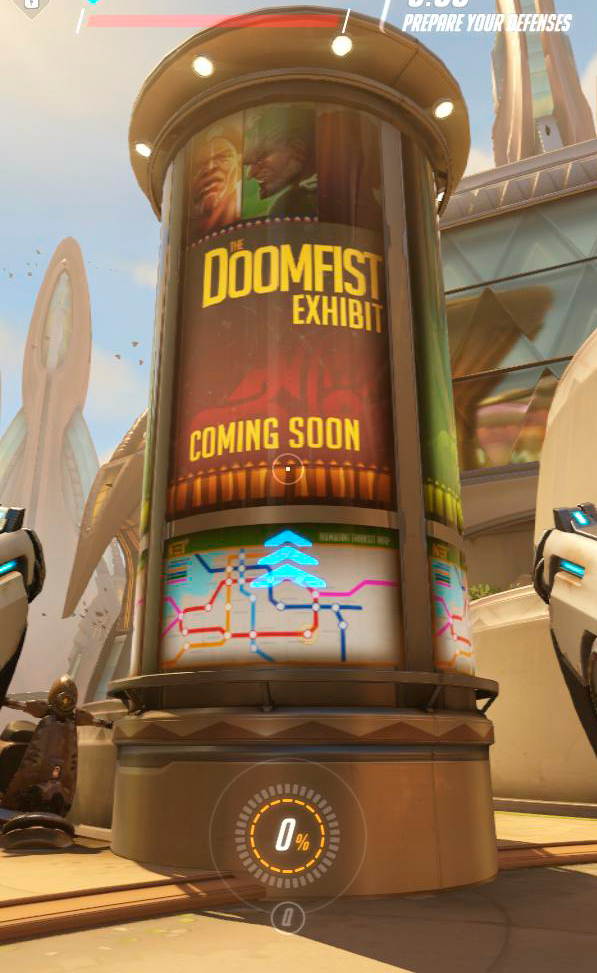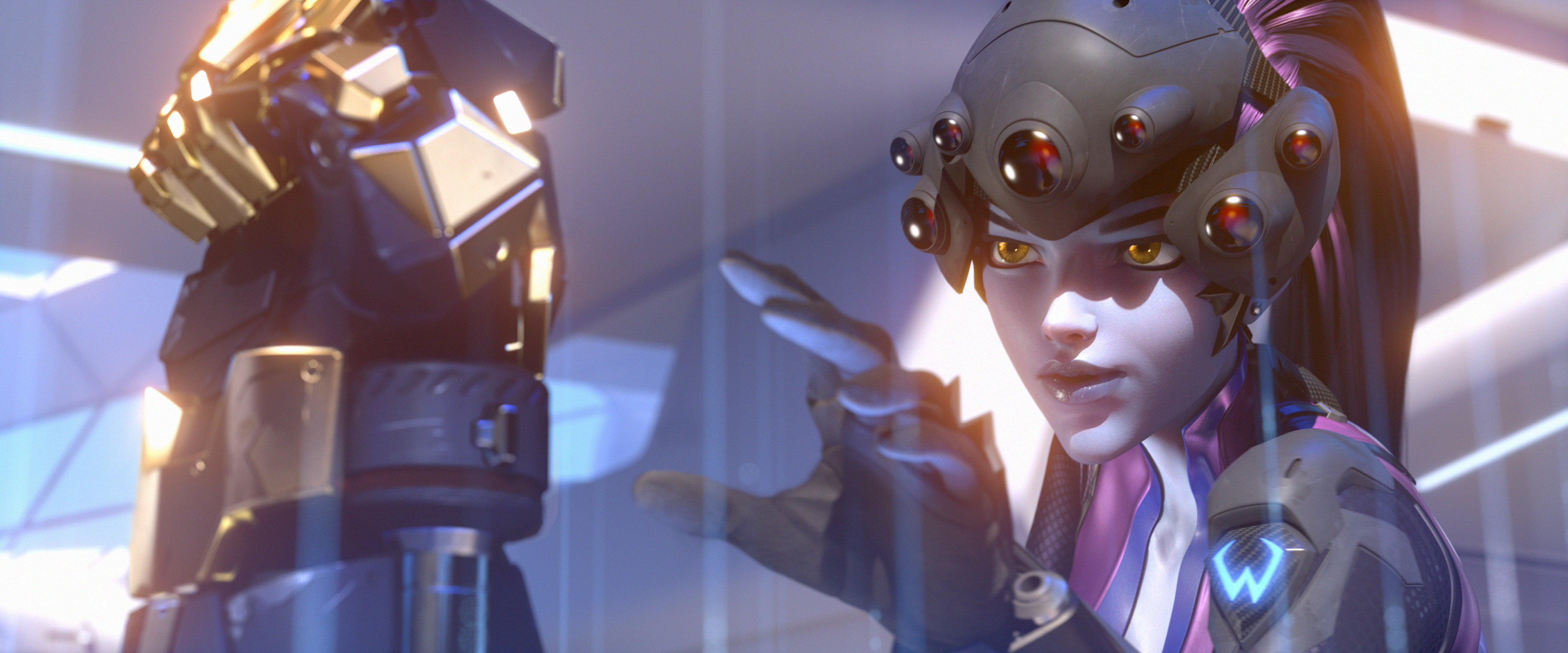
PCG: Do you see certain characters as ‘bigger’ in the world than others? To me, Soldier: 76 is undeniably a more important character than someone like Mei. Do you categorize the characters when you're thinking about them—like “OK, Soldier: 76 is the main guy and Mei is just backdrop”—or do you just make people?
Metzen: I think more often than not, we're just making people. 76 is kind of a weird one just because—I don't know—I have a kind of a personal connection to the character and, in many ways, kind of leveraged him as this fulcrum point with Overwatch. He represents what it used to be at its greatest, but now he's kind of this broken creature that poses the question of can Overwatch ever come back? Can he ever really come back and be heroic? So he's a unique mascot-y kind of character. And then there's characters like Tracer, who's one of the first characters we really got to know. And while she wasn't particularly created to be a starring role, if you will, we felt on the team, the more we got to know her and play her, she was kind of like this Spider-Man type character for us. She's so rad, and it feels good to leverage her in the front of story ideas. We didn't anticipate that, it's just sometimes that happens as you get to know characters better and the opportunity presents itself to use them in creative ways.
When we made the cinematic, [Doomfist] was just a gauntlet.
So I think we just made characters to be characters, and sometimes they step forward and their vibe and their back story kind of lends itself to more dynamic use, given where we’re going in the meta. So sometimes it's not always planned, but we certainly don't create characters just to be B-level. I think we're trying to hit it out of the park every time out and create interesting people that players will potentially identify with or be delighted by. Our hope would be that there would be an audience for all of them at some point and bitchin' stories to tell for all of them, though we're certainly not planning on all of them to directly link to the ultimate Overwatch franchise story. Not all of them do, and not all of them should. I think if all of these characters or Overwatch agents have some tragic past, then it just becomes formulaic, and we want to allow ourselves enough freedom and space to just develop interesting characters first and foremost.

PCG: So, obviously you’re announcing things at your own pace, and that's an important part of storytelling. But I do want to ask about Doomfist.
Metzen: [Laughs]
Chu: I heard he could level a skyscraper.
Metzen: That's what I heard.
Keep up to date with the most important stories and the best deals, as picked by the PC Gamer team.
PCG: Yeah, I've heard that, too. The gauntlet in the announcement cinematic was Doomfist’s. And then his gauntlet is the payload on the Numbani map, and Numbani is just ripe with references to him. There are banners that say “the Savior, the Scourge, the Successor” and in all of the imagery “the Successor” is always conveniently blacked out. Can you give us any hints about Doomfist? He seems like a very important character in the world that we pretty much haven't heard anything about.
Metzen: I would just frame it by saying it's a perfect example of what we were just talking about. We did not develop Doomfist to be any more important to the franchise than any other character, at all. What started to happen with Doomfist, the more we jammed on him, especially—you got the Gauntlet in the announcement cinematic. And then you've got the same Gauntlet being taken on the payload in the Numbani map, and then this exhibit [about Doomfist in Numbani]—and we kind of started thinking how fun would it be if the Doomfist character is actually more of a generational hero, like you see in some of the the big superhero universes. Potentially any number of people had been The Flash or any number of people had been a Green Lantern. And there's kind of this sense of generational identity. So Doomfist was kind of just a fun riff on that. We've talked about the gameplay of doing a Doomfist character—again, we have nothing to announce—but we've talked about it and how much fun would it be to design that character. So as Numbani took shape as a playable space, we knew that this character of Doomfist would be from here and how fun [it would be] to present the idea as more of a generational [character].

Click the arrows to expand.
But, we have no particular aims to make that character any more foreground in the fiction than anybody else. It was just a fun, creative exercise. So in that way, what you see on that map and what it makes you feel, as of today, is what you see and not necessarily much deeper than that. One day, if we build a Doomfist character, that character will be totally informed by the fact that there were Doomfists before him, if that makes any sense. But of course, I want to reiterate we have not announced any Doomfist character at this time. But it's just kind of a fun way to chase that character's identity. You have anything on that, Mike?
Chu: No, I think it's a really good example. He started as a line in this cinematic, and then these ideas that sort of gain traction and gravity. We'll jam and a little bit of an idea will come out, then we decide that “Oh, we're going to do the Numbani map,” and then we're all like talking about what the map is all about. I remember we spent a lot of time talking about what the point of that map was, and we had all sorts of different ideas. I mean we had a ton. At some point, it came up and it was just like, “Oh, what if it's Doomfist’s gauntlet?” And then once you have that as a core beat in the gameplay and for the map, then it's like, “Well, how do we help to tell that story?” And then we have more discussions and we're just trying to find ways to tell that story and you can see how it kind of goes from something that's mentioned in the cinematic to a key story beat.

PCG: At the time you guys released that cinematic, had you already made the Numbani map? Had you decided that you were going to go further with Doomfist? Or at that point was it literally just a gauntlet?
Metzen: At that point, when we made the cinematic, it was just a gauntlet. I remember we kind of had a writing team at the time as we were scripting that cinematic and Jeff Chamberlain, the director [of the announcement cinematic], really laid a lot of that out. But I'm like, I want to just have almost like a shotgun blast of flavor. So I had riffed Sound Quake and Doomfist, and I just personally enjoy riffing compound noun names if World of Warcraft is any indicator. So I just threw a bunch of shit out to make it sound like there's all this texture. I guess we're letting air out of the balloon and looking much less cool, but that was the intent of the flick—to create a sense of a far larger tapestry that we would actually weave together over time. And that's been my experience with all these game worlds over time. WoW started very, very humbly back with Warcraft 1. It's really time in this strata of ideas that give a world its real depth and the depth of its details and specificity.
In many ways, we're kind of making this up as we go ... it's a much more organic way to build a world.
So with Overwatch, we didn't over-design or over-world-build at all. We've tried to keep pace with the number of characters in development at any given time and make sure that the calories we're burning are specifically useful in rounding out each character in turn and then making connection points. Other than really broad things like the Omnic Crisis and big historical moments, in many ways, we're kind of making this up as we go and taking advantage of all these little details that filter out and tying up these ends and drawing touch points between them. In a way, it's a much more organic way to build a world and to broaden its tapestry. For instance, as opposed to on Warcraft and StarCraft—I went crazy on those first games, like building out this big world history. With this one, I think we're taking our time and not trying to get too far ahead of it so that, again, we and the developers have maximum freedom to chase new ideas and not be overly bogged down by the weight of a franchise that can occur over time. Which, in many ways, is like the anti-WoW.
On the next page: Could Overwatch ever see an Omnic Crisis-level event now?


